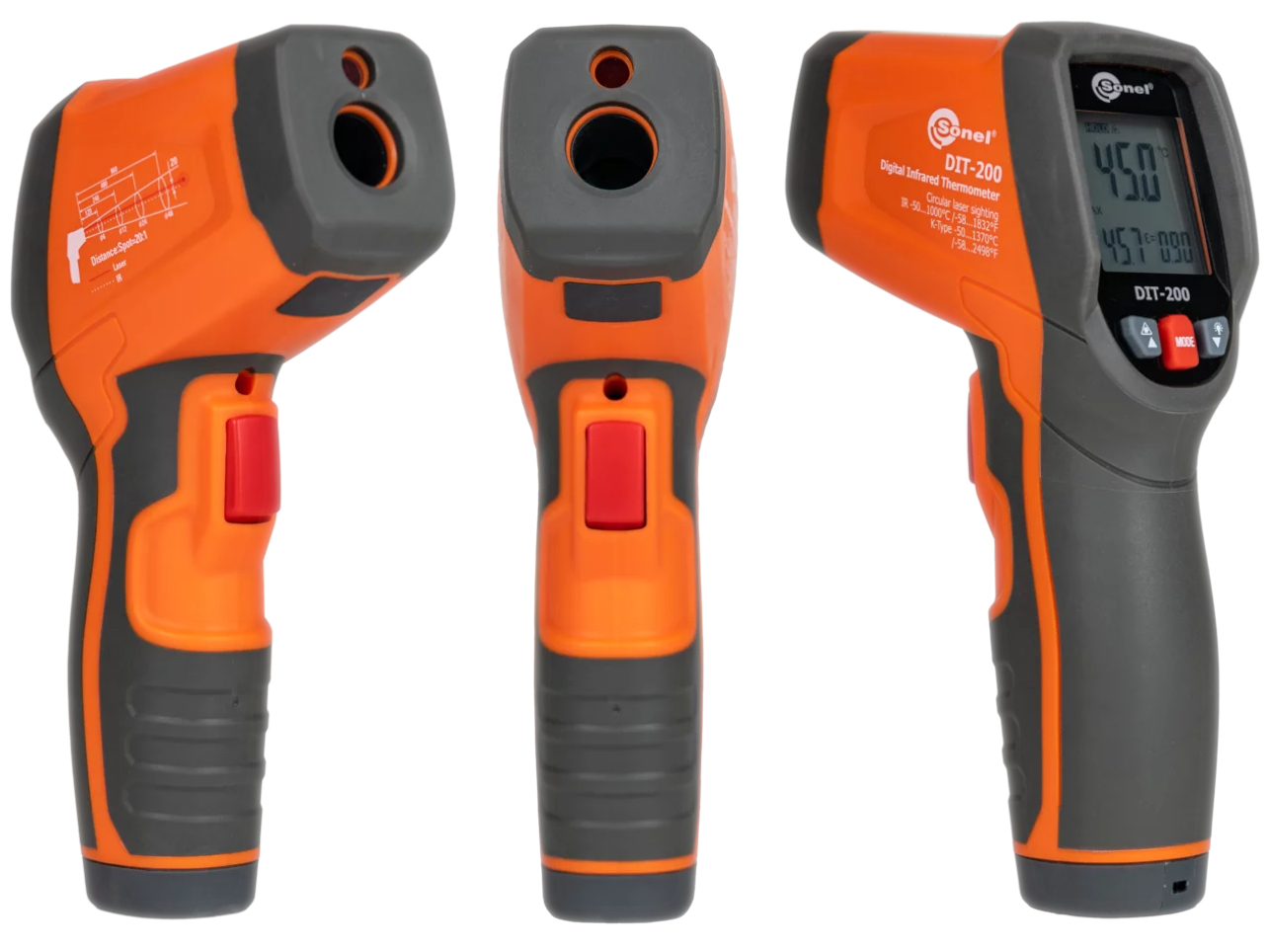SONEL-Infrared Thermometer
SONEL
SONEL-Infrared Thermometer - FEATURE:
-
Temperature measurements with laser precision
Sonel DIT-200 is the pyrometer for professionals. Durable housing, ergonomic grip, buttons accessible with one finger - all this contributes to the comfort of the user. Technical parameters speak for themselves. The advanced laser pointer will precisely and unambiguously indicate the area of the performed measurement.
Features
- Precise non-contact temperature measurement.
- Emissivity digitally adjustable from 0.10 to 1.00.
- Resolution from 0.1°C and 0.1°F.
- Laser pointer:
- circular
- Input for type K temperature probe
- Displaying MAX, MIN, AVG, DIF temperatures.
- Automatic Data Hold
- Temperature unit selection: °C / °F.
- High and Low alarm.
- Backlit LCD display.
- Auto power off.
- Reinforced design for IP54 ingress protection.
Special features
- Temperature measurements in the range of -50°C...1000°C.
- Operation with an external temperature probe - temperature measurement range -50°C...1370°C.
- D:S ratio of 20:1.
- Circular laser pointer (marking the measurement area).
Applications
- Temperature measurement of transformers.
- Temperature control of busbars and connections.
- Monitoring the condition of heating and cooling devices.
- Temperature control of materials in metallurgical processes.
- Checking the heating of rollers and bearings in transport conveyors.
- ...and many others
Infrared measurements
Infrared temperature meters are used to determine the surface temperature of the tested object. The optical system of the instrument detects the radiation that is emitted, reflected and transmitted, then gathers them and focuses it in the detector. The electronic system converts the optical data into a temperature value. To increase the precision of measurement and facilitate targeting, the device is equipped with a laser pointer.
Infrared radiation
Infrared radiation is generated by the movement of electrons inside the atoms of a given material. It is electromagnetic radiation with a wavelength in the range of 780 nm…1 mm. It is emitted by any material with temperature above 0°K (-273.15°C). The emission increases with increasing temperature, whereas the wavelength decreases.
Emissivity factor
It is a parameter that determines the ability of a material to emit infrared radiation. Its values are in the range 0…1.
- A value equal to 1 is the emissivity of a black body that absorbs all radiation.
- A value equal to 0 is the emissivity of a white body (reflecting 100% of radiation).
Each object has its own emissivity factor, depending on the type of material, surface roughness, viewing angle, wavelength and temperature.
The D:S ratio
The D:S ratio (distance to spot) determines the relationship between the distance of the pyrometer from the tested object and the diameter of its circular field of view, from where it collects the radiation. The tested area becomes larger as the meter moves away from it, i.e. the share of the tested object’s area in this field decreases. Hence, the smaller is the measured target, the smaller should be the distance to it. Therefore, the D:S ratio has a significant influence on the accuracy and precision of the temperature reading.
